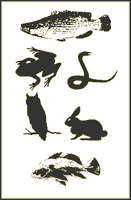Nebraska Cooperative Fish and Wildlife Research Unit

Nebraska Cooperative Fish and Wildlife Research Unit: Staff Publications
Date of this Version
7-23-2023
Citation
Fisheries Research 267 (2023) 106801. https://doi.org/10.1016/j.fishres.2023.106801
Abstract
Bank- and boat-angler efforts are logistically difficult and costly to estimate, preventing landscape-scale estimates that are required to address current and future challenges (e.g., climate change, invasive species) for inland recreational fisheries. Using a large Nebraska, USA, recreational fishery dataset (N = 67 waterbodies), we demonstrate that waterbody size can be used to predict bank- and boat-angler efforts across a heterogeneous landscape of extra small (< 104 ha) and large (> 647 ha) waterbodies. Bank and boat anglers respond to waterbody size, however these relationships appear to be unique between the two angler types. Boat-angler efforts increased as a function of waterbody size, whereas bank-angler efforts increased as a function of waterbody size for extra small waterbodies but not for large waterbodies. The ability to connect waterbody size and angler effort will be important for continued effective inland fisheries management.
Included in
Aquaculture and Fisheries Commons, Environmental Indicators and Impact Assessment Commons, Environmental Monitoring Commons, Natural Resource Economics Commons, Natural Resources and Conservation Commons, Water Resource Management Commons


Comments
Open access.